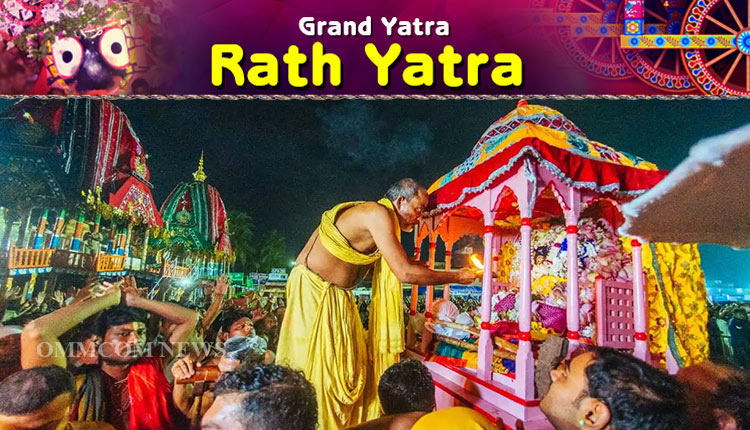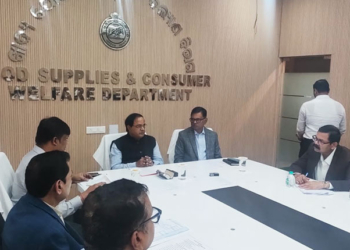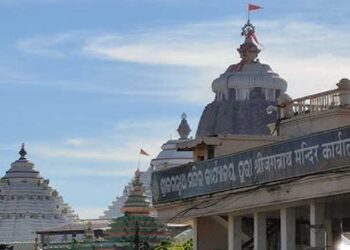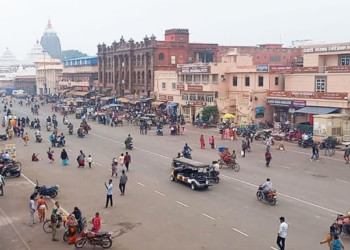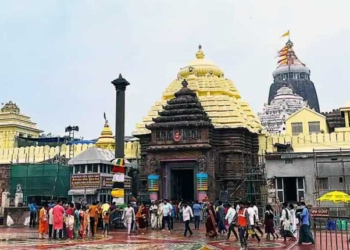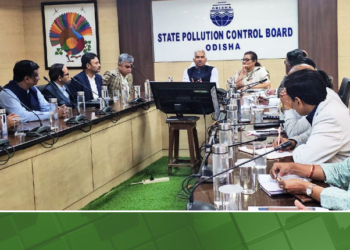Bhubaneswar: It’s very genuine on the part of a housewife to get angry when her husband comes home late. Being a wife, Goddess Lakshmi too possesses the same quality. Yes, you heard it right. Goddess Lakshmi, the embodiment of love and devotion, displays her displeasure when Lord Jagannath, her consort, delays to return to the sacred Srimandir, their heavenly abode.
Lord Jagannath remains so busy meeting His devotees and spending time with siblings at His aunt’s house that He forgets about Goodness and gets really late coming back to Srimandir.
Lord Jagannath’s love for his devotees and family knows no bounds, but it comes at a price. Entranced by their devotion and warmth, He loses track of time, forgetting His divine partner, Goddess Lakshmi who awaits His return at Srimandir. As the days tick by, Lord Jagannath’s tardiness sparks a divine storm, setting the stage for a celestial confrontation that will shake the heavens.
“The Hera Panchami ritual brings to life the divine drama of celestial deities. Goddess Lakshmi’s wrath is unleashed upon Lord Jagannath as she unleashes her fury, her anger blazing like a thousand suns.
Inception of The Ritual
According to the ancient texts of ‘Ratha Chakada’, King Kapilendra Deb revolutionized the Hera Panchami ritual, transforming it from a simple chanting ceremony to a grand and majestic celebration. Since his reign, this ritual has become an integral part of the Rath Yatra festivities. Significantly, Hera Panchami marks the beginning of the Bahuda Jatra, where the three chariots are ceremoniously turned southward, known as Dakhina Moda, signalling the return journey of the deities.
Around 129 years back Odisha’s pioneering vernacular daily, Utkal Deepika, published the first-ever article on Hera Panchami, shedding light on this significant aspect of Odia culture. This milestone marked the beginning of a new era in the coverage of Odisha’s rich heritage, exactly on July 28, 1888.
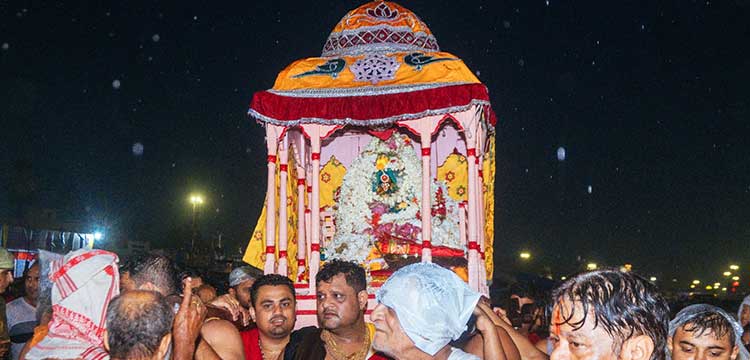
What Jagannath Researcher Says About This Unique Ritual…
According to Jagannath culture researcher Trilochan Mishra, Goddess Maha Lakshmi embodies the quintessential Odia wife’s sentiments, feeling distraught when Lord Jagannath embarks on his annual journey with his siblings, leaving her behind at the temple. Their divine marriage takes place on Jyeshtha Sukla Ekadasi, the 11th day of the bright fortnight of Jyeshtha. However, following the ‘Chaturthi Snana’ on Jyeshtha Purnima, Lord Jagannath and his siblings fall ill for 15 days and are confined to the ‘Anasara Gruha’ for recuperation. The temple doors remain closed during this period. After recovering, the Lord appears before devotees in the Naba Joubana Besha ritual. Significantly, Lord Jagannath’s departure for his annual sojourn without informing his newly-wed wife, Maha Lakshmi, annoys her, mirroring the universal sentiment of a wife’s longing for her husband’s presence.
He further adds: “It is when Goddess Bimala comes to the rescue of Goddess Lakhmi when the latter’s husband does not come back even after four nights. Maa Bimala, who is considered the Tantric consort of Jagannath and a guardian of Srimandir, gives Goddess Lakshmi ‘Mohana Churna’ (a powder to attract husband) for Lord Jagannath’s early return, saying ‘Aou Dukha Na Kara Go Bishnu nka Gharani, Mohechurna Basibhuta Hebe Tha Jani’.
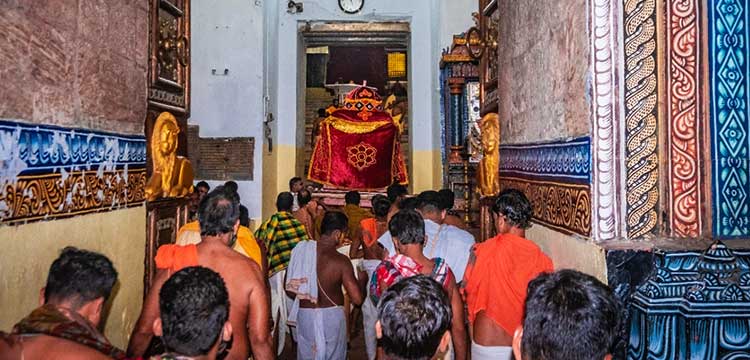
“Following God Brahma’s reminder, Goddess Lakshmi makes her way to the Gundicha temple, where Lord Jagannath resides with his siblings. Brahma has once said, ‘A single glance at Lord Jagannath at Adapa Mandap is equivalent to a hundred darshans at Ratna Mandap’. Brahma’s words prompt her to visit her husband at Adapa Mandap. In the evening, a grand procession makes its way along the Bada Danda, as servitors carry Goddess Lakshmi in a decorated palanquin, accompanied by great fanfare and jubilation, to the Gundicha temple, where she will finally be reunited with Lord Jagannath”, maintained the researcher.
The procession of Goddess Lakshmi comes to a halt near the Nandighosha Ratha, the chariot of Lord Jagannath, where she is greeted with ceremonial offerings. She enters the Gundicha temple, throws the ‘Mohana Churna’ to attract her husband, and receives a garland of consent (‘Agyan Mala’) on behalf of Lord Jagannath. However, feeling neglected and angry due to her husband’s indifference, she orders her servitors to damage a part of his chariot, seeking to teach him a lesson. Later, overcome with guilt for causing harm to the sacred Nandighosha, she secretly returns to Srimandira, abandoning her procession and fanfare, and humbly makes her way back through Hera Gohiri Sahi, her pride and anger tempered by remorse.
Rashmi Rekha Das




